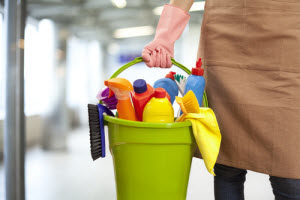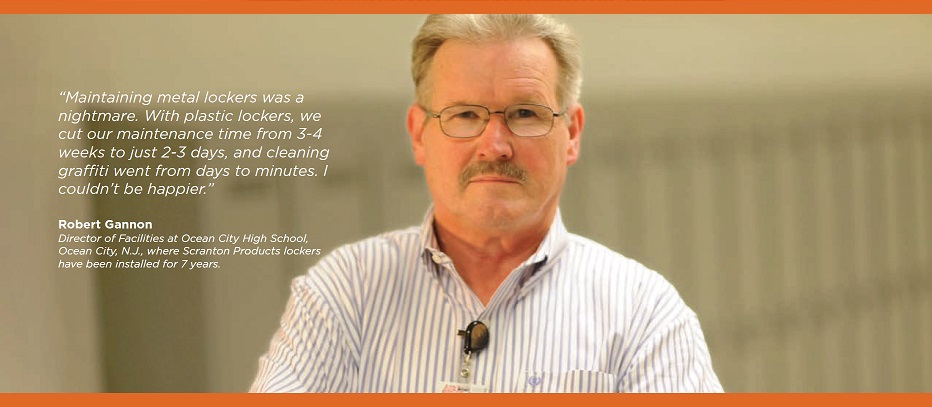Flu season can be a tough time of the year for school facility managers. Finding ways to combat the spread of germs

is easier said than done, but the important goal to keep in mind is to provide students with a safe and healthy environment to learn. The flu and germs can be easily spread in a school setting due to the many surfaces that are constantly touched, shared items, and the sheer number of students that could be ill. At times, it almost seems like an uphill battle. However, as a facility manager, there are several steps that you can take to help reduce the spread of germs in your school during flu season.
Inspect Your Water System
As flu season rolls in, you’ll want to be sure that your water system is in great shape. This not only means changing the filters to directly reduce any possible germs, but you’ll want to make sure that the actual water flow systems are functioning properly. During flu seasons, teachers are expected to stress to their students the importance of washing hands to avoid getting sick. This means that the faucets in your bathroom will be getting a lot of use, and that by functioning properly, it’ll allow students to wash their hands and help prevent the spread of germs.
Clean & Disinfect
Due to the many contact surfaces in your school, there’s no doubt that they’ve accrued their fair share of germs. During this season, it’s important to ramp up your cleaning schedule. Be sure to properly disinfect lunch tables, lockers, water fountains, door handles, and any other point that gets touched by many people throughout the day. By properly disinfecting any contact surfaces, you’re doing your part to greatly reduce the spread of germs and the flu.
Install Hand Sanitizer Stations
Hand sanitizer is one of your best friends when flu season rolls around. Even if a portion of the student body utilizes  hand sanitizer, there will be a significant drop in student absences. You can put hand sanitizer pumps in bathrooms, the lunch room, and any administrative office. However, you may also want to invest in a hand sanitizer stand in high-traffic areas like major staircases, the library, and anywhere where there are computers. Shared computer keyboards are often a hotbed of germ spread, so be sure to combat it by offering hand sanitizer for students to use after they use the computer.
hand sanitizer, there will be a significant drop in student absences. You can put hand sanitizer pumps in bathrooms, the lunch room, and any administrative office. However, you may also want to invest in a hand sanitizer stand in high-traffic areas like major staircases, the library, and anywhere where there are computers. Shared computer keyboards are often a hotbed of germ spread, so be sure to combat it by offering hand sanitizer for students to use after they use the computer.
Reevaluate Your School’s Lockers & Toilet Partitions
Believe it or not, your lockers and toilet partitions can have a pretty significant part in the spread of germs. Toilet partitions can absorb moisture and sprout mold, and both partitions and lockers are touched frequently by many students throughout the day. Keeping up with sanitizing these components can prove difficult, but instead of regularly cleaning and sanitizing, why not replace these components with a better material that can resist the absorption of germs?
HDPE plastic—available as toilet partitions, lockers, and storage cubbies—provide a secure and stable structure that can stand up to the spread of germs. The surfaces are non-porous, so no bacteria will be infiltrating the inside of this solid plastic. HDPE plastic is also highly durable, and can actually resist scratches and dents. The biggest benefit of HDPE is that this material is low-maintenance and only requires a light cleansing, as opposed to the other materials that require vigorous scrubbing.
Would you like more information about keeping your facility in tip-top shape? Download our free commercial restroom cleaning checklist now!

 crowded. In fact, most students contract sicknesses while at school, so you’ll need to take the necessary steps to reduce the spread of disease in your educational facility. However, MRSA (Methicillin-resistant Staphylococcus aureus) has become a common problem in schools. This bacteria can be spread in a variety of ways, but the best way to prevent it from spreading is to stop it at the source: locker rooms and restrooms.
crowded. In fact, most students contract sicknesses while at school, so you’ll need to take the necessary steps to reduce the spread of disease in your educational facility. However, MRSA (Methicillin-resistant Staphylococcus aureus) has become a common problem in schools. This bacteria can be spread in a variety of ways, but the best way to prevent it from spreading is to stop it at the source: locker rooms and restrooms. clean and sanitize the high risk areas
clean and sanitize the high risk areas

